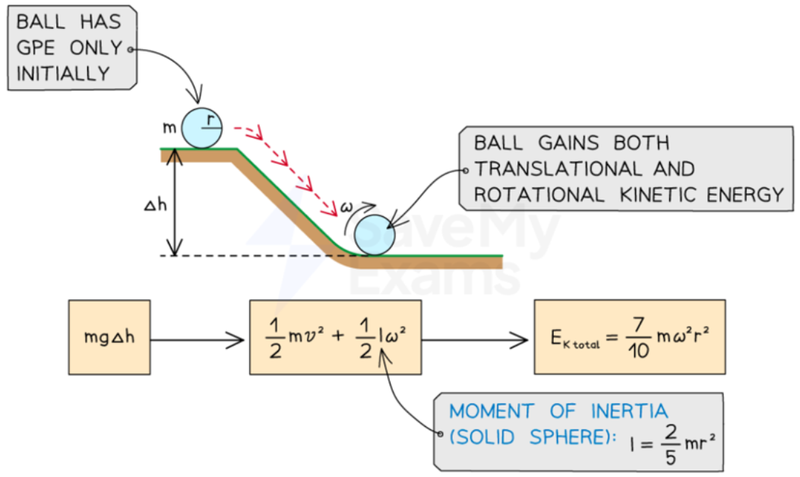What is Rolling?
- When an cylindrical object is on a slope, the friction force creates torque and causes the object to roll down the slope.
- When an object starts rolling, it gains both rotational and linear velocity.
- However, if the angular velocity is zero, then the object is slipping.

- As the object has both vectors of angular velocity and linear velocity, some of the vectors cancel out.
- This leads to the object having high tangential velocity at the top, causing it to roll.
- The bottom of the object does not have velocity.
Energy Transfer During Rolling
- As an object rolls down a slope, its gravitational potential energy gets converted into both rotational and linear kinetic energy.
- If the object is slipping, then gravitational potential energy is only converted to linear kinetic energy.


